Your Ultimate Guide to Experiencing the Total Solar Eclipse 2027

As the world spins and the years pass, we find ourselves on the cusp of witnessing one of nature's most awe-inspiring spectacles: the solar eclipse of 2027. This celestial event, where the moon passes between the Earth and the sun, cloaking the day in an ethereal twilight, promises to be a moment of profound beauty and wonder.
The solar eclipse 2027, occurring on August 2nd, is already being hailed as the "Eclipse of the Century" for its remarkable duration and the swath of Earth it will cover. This event is poised to create an unparalleled viewing experience across Africa, Europe, and the Middle East, with its path of totality including countries such as Egypt, Morocco, Spain, Saudi Arabia, Algeria, and Libya, among others. Its significance extends beyond just an astronomical phenomenon; it stands out for the opportunities it provides for millions to witness the marvels of our universe firsthand, offering a unique opportunity for both casual skywatchers and seasoned astronomers.
As we embark on this ultimate guide to experiencing the solar eclipse of 2027, we'll journey through each location touched by the eclipse's shadow. Emphasizing viewing tips and safety, we'll explore how to fully embrace this rare spectacle, ensuring readers are well-prepared to experience the solar eclipse of 2027 in all its glory.
Understanding Solar Eclipses: The Science Behind the Phenomenon
A solar eclipse occurs when the moon's orbit brings it directly between the Earth and the sun, casting a shadow over the Earth. The science behind this event is as fascinating as the eclipse is beautiful. It's a dance of celestial mechanics, governed by the laws of physics, that allows us to predict with precision when and where an eclipse will occur. The 2027 eclipse belongs to a cycle known as the Saros cycle, which has been used to predict eclipses for centuries. This understanding not only deepens our appreciation for the event but also connects us to the astronomers of ancient times, who saw in these patterns the workings of a universe more orderly and magnificent than they had dared to imagine.
Customize Your Dream Vacation!
Get in touch with our local experts for an unforgettable journey.
Plan Your TripWhy the 2027 Total Eclipse is Unique
What sets the solar eclipse of 2027 apart from others is its path of totality, sweeping across regions rarely touched by the shadow of a total eclipse. This event will offer a unique spectacle to inhabitants and travelers in parts of North Africa, the Middle East, and Southern Europe. The duration of totality for this eclipse, where the moon completely covers the sun, will be unusually long, offering an extended experience of the ethereal beauty of totality. This rarity, combined with the unique landscapes under the path, from the deserts of North Africa to the historic cities of Europe, will make the 2027 eclipse a particularly special event for eclipse chasers and casual observers alike.
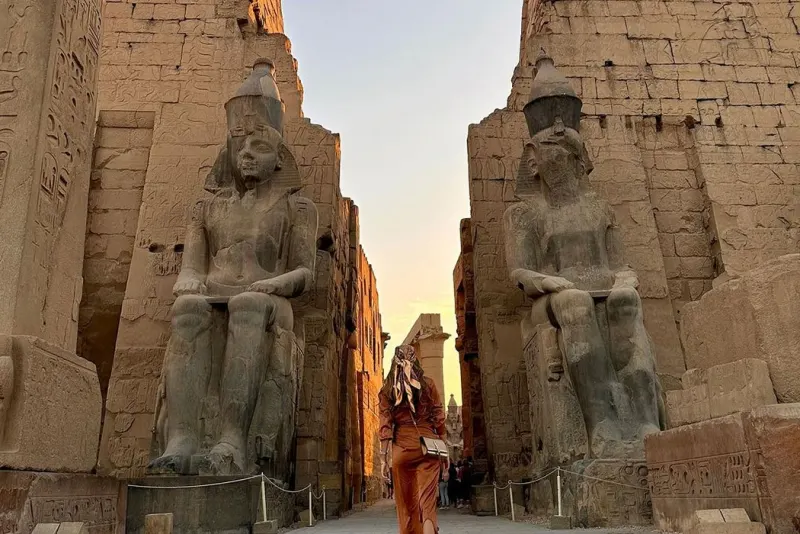
Path of the Solar Eclipse 2027
On August 2nd, 2027, we'll witness a solar eclipse carving a dramatic path across the globe. We'll uncover the exact locations experiencing the total solar eclipse, and also a few other locations where a partial solar eclipse will occur.
Locations of the Total Solar Eclipse 2027
1. Egypt
There are several locations in Egypt that are suitable for observing the total Solar Eclipse of 2027.
Luxor: The Heart of Eclipse Viewing
Luxor, renowned for its rich historical tapestry, is poised to become the focal point for the 2027 solar eclipse. With its strategic location offering the longest duration of totality at 6 minutes and 22 seconds, Luxor is not just a city but a gateway to the ancient world. The anticipation is palpable as we prepare to witness this celestial spectacle from Luxor's luxurious hotels positioned on private islands along the Nile, providing an unparalleled viewing experience. The city's well-developed tourist infrastructure makes it an ideal destination for eclipse chasers seeking comfort and accessibility.
The Valley of the Kings, with its mystic allure and historical significance, is expected to draw thousands to its rocky domains. Here, the Temple of Hatshepsut stands as a sentinel to the past, ready to host what could be the most memorable event of our lifetimes. This site, known for the tombs of the pharaohs, offers a dramatic backdrop against which the eclipse will unfold. The ancient walls that have witnessed millennia may now experience the rare dance of celestial bodies in perfect alignment. There is also Karnak, a massive temple complex in Luxor, which will be a great spot for observing the eclipse.
Sohag
For those looking to escape the crowds of Luxor, Sohag presents a quieter yet equally promising viewing spot. Located a four-hour drive north of Luxor, on the west bank of the Nile, Sohag offers a different perspective on the eclipse with less congestion.
Siwa Oasis
Further afield, the Siwa Oasis, with totality duration 5 minutes and 30 seconds, provides a serene desert setting that contrasts sharply with the bustling energy of Luxor.
Red Sea
Additionally, the Red Sea regions provide serene coastal vistas, where the eclipse can be observed against the backdrop of sparkling waters. For lovers of the sea and water activities such as diving and snorkeling, Marsa Alam in the Red Sea is the ideal place to admire the total Solar Eclipse with totality duration of 6 minutes and 15 seconds. In this fascinating place, you will have the opportunity to admire the colorful marine life and the celestial phenomenon of the century.
- Type: Total Solar Eclipse
- Maximum totality duration: 6 minutes, 22 seconds (Luxor)
- Highlighted spots of the eclipse: Luxor, Siwa, Sohag, Asyut, Marsa Alam
- Recommended tours: Trip to Egypt: Pyramids & Nile by Air, Trip to Egypt: Pyramids & Nile by Train, 5-Day Siwa Oasis Tour, 4-Day Siwa Oasis Tour, 5 Days Trip to Egypt: Cairo and Luxor, Cairo, Nile Cruise & Hurghada Holiday, and Luxury Egypt and The Nile Tour
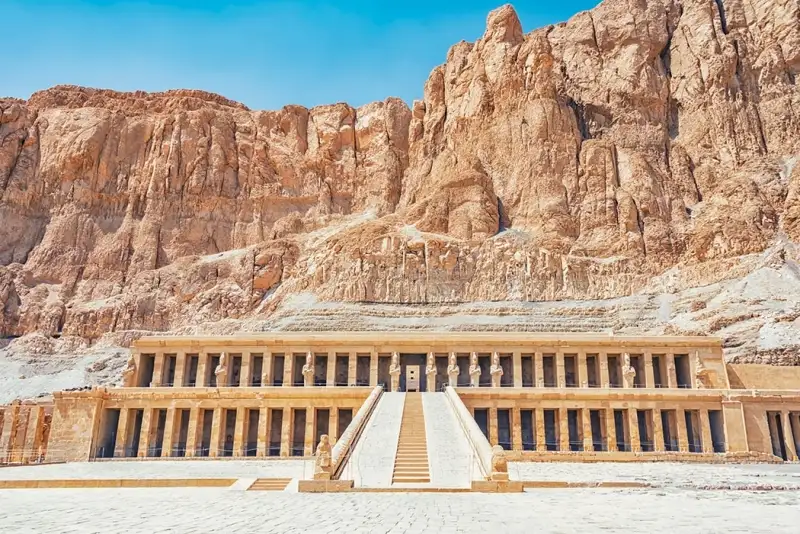
2. Morocco
Tangier
As the solar eclipse 2027 traces its path across the globe, Tangier in Morocco offers a prime location for witnessing this astronomical event. Positioned at the northern tip of Morocco, this city, steeped in history and culture, provides a panoramic view where the Atlantic meets the Mediterranean. Observers in Tangier will experience the eclipse, which will last for 4 minutes and 51 seconds, with a backdrop of historic landscapes, including the bustling medinas and the picturesque Kasbah. The unique geographical location of Tangier not only enhances the visual spectacle of the eclipse but also adds a layer of cultural enrichment to the experience.
Marrakech
Further south, Marrakech, known as the Red City, invites eclipse chasers to enjoy the spectacle amidst its vibrant souks and majestic palaces. The solar eclipse 2027 will cast a surreal light over the city's famous Jemaa el-Fnaa Square and the ancient palaces, creating a once-in-a-lifetime experience in a setting that blends the old with the new. The contrast between the celestial phenomenon and the earthy tones of Marrakech’s architecture promises not only a visual feast but also an opportunity to delve into the rich Moroccan culture that thrives in the city.
Agadir
On the serene shores of Agadir, spectators can enjoy a less crowded, yet equally impressive, viewing experience. This modern city with its long, sandy beaches offers a tranquil setting for observing the solar eclipse 2027. The calm waters of the Atlantic will mirror the spectacle above, providing a dual experience of the eclipse both in the sky and reflected on the sea. Agadir’s clear skies are perfect for eclipse viewing, making it an ideal spot for those looking to combine a holiday with this rare astronomical event.
The Atlas Mountains
For those seeking a more secluded and elevated experience, the Atlas Mountains will serve as a prime location. The high altitude provides clearer skies and a potentially more dramatic view of the eclipse. Observers here can immerse themselves in the tranquility of nature while experiencing the eclipse cutting a silent path across the sky. The crisp mountain air and the panoramic views will enhance the visual spectacle, making it a memorable adventure for avid hikers and nature lovers alike.
- Type: Total Solar Eclipse
- Maximum totality duration: 4 minutes, 51 seconds (Tangier)
- Highlighted spots of the eclipse: Tangier, Marrakech, Agadir, Oujda
- Recommended tours: Morocco Imperial Cities, Morocco Tours in All Its Colors, and The Beating Veins of Morocco
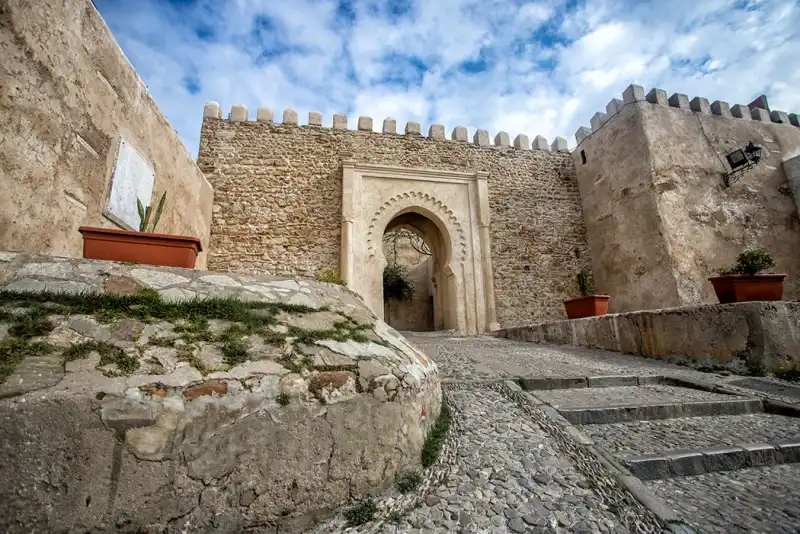
3. Spain
Tarifa
Tarifa, often celebrated for its stunning beaches and vibrant windsurfing scene, will soon be known for another spectacular reason. On August 2, 2027, this southernmost point of mainland Spain will offer more than 4.5 minutes of totality during the solar eclipse. This rare event promises an unforgettable celestial spectacle, where the alignment of the sun, moon, and earth will plunge the day into a brief, mystical darkness, turning the skies above Tarifa into a grand astronomical theater.
Cadiz
In the historic city of Cadiz, known for its ancient maritime heritage, the solar eclipse will cast its shadow for over two minutes, 2 minutes and 55 seconds to be exact, offering a unique overlay to its rich cultural tapestry. As the only European country to witness the totality of the solar eclipse in 2027, Spain, and particularly Cadiz, becomes a pivotal location for astronomers and skywatchers alike. The eclipse will provide an extraordinary backdrop to the city’s historic sites, such as the Cadiz Cathedral and La Caleta Beach, enhancing the visual drama with its cosmic display.
Ceuta and Melilla
Further enhancing Spain’s unique position during the solar eclipse 2027 are Ceuta, with totality duration 4 minutes and 49 seconds, and Melilla, with totality duration 4 minutes and 33 seconds, Spanish territories on the African continent. These locations will experience the path of totality, offering a rare astronomical event viewed from an exceptional geographical perspective. Observers here will not only enjoy the eclipse but also the interplay of diverse cultures and landscapes that characterize these enclaves. This event marks a significant moment, as Spain will experience a sequence of celestial phenomena, with another total eclipse and an annular eclipse following closely within a year and a half.
- Type: Total Solar Eclipse
- Maximum totality duration: 4 minutes, 49 seconds (Ceuta)
- Highlighted spots of the eclipse: Tarifa, Cadiz, Ceuta, Melila, Malaga
- Recommended tours: Andalusia, Barcelona & Mediterranean Coast Tour, and Madrid and Andalusia Tour

4. Saudi Arabia
Makkah
Makkah, the spiritual center for millions worldwide, will witness the total solar eclipse on August 2, 2027, starting at 5:50 UTC and concluding at 8:50 UTC. The peak of this celestial event will occur at 7:20 UTC, offering a profound moment of darkness lasting 5 minutes and 14 seconds. This unique experience in Makkah, a city usually bathed in sunlight, will provide both residents and visitors a rare opportunity to observe the eclipse's full glory, enveloped by the city's deep cultural and spiritual significance.
Astronomical Alignments and Lunar Precedents
The solar eclipse in Saudi Arabia is not just a standalone event but part of a broader celestial ballet. Preceded by a penumbral lunar eclipse on July 18, 2027, and followed by another on August 17, 2027, this sequence of astronomical events offers a unique opportunity for both scientific study and public engagement with celestial phenomena. The eclipses provide a window into the rhythms of the cosmos, observed with precision thanks to predictions aligned in both Terrestrial Dynamical Time (TD) and Universal Time (UT1).
Weather and Viewing Conditions
The viewing experience of the solar eclipse in Makkah could be significantly influenced by local weather conditions. With predictions indicating a possibility of a very cloudy sky, the clarity of the eclipse might be compromised. However, the anticipation and preparation for this event are palpable, as clear skies could allow thousands of observers to witness one of nature’s most awe-inspiring sights. The city is gearing up to accommodate the influx of visitors and astronomers, ensuring that everyone has the opportunity to partake in this rare astronomical occurrence.
- Type: Total Solar Eclipse
- Maximum totality duration: 6 minutes (Khamis Mushait)
- Highlighted spots of the eclipse: Mekkah, Jeddah, Taif, Khamis Mushait
- Recommended tours: 10-Day Trip to Saudi Arabia, 8-Day Saudi Arabia Tour Package, and Jeddah Short Break
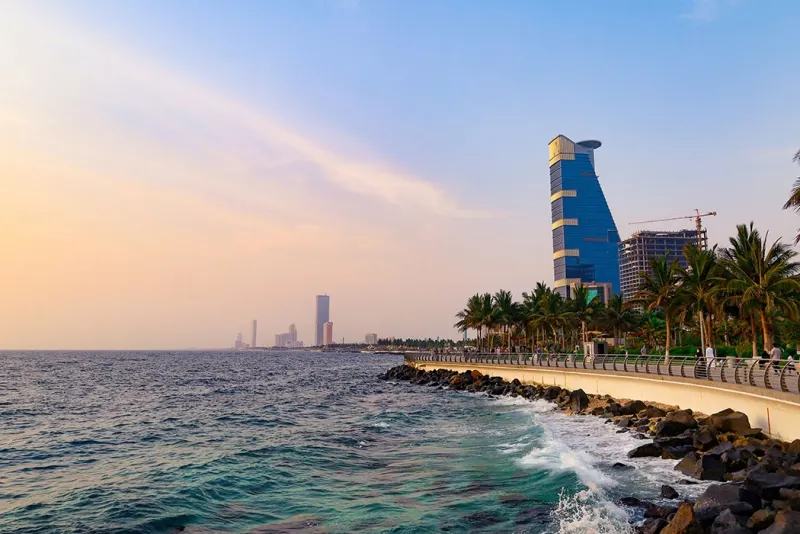
5. Libya
Benghazi
Spanning across Libya, the path of the 2027 solar eclipse promises a spectacle of astronomical proportions. Notably, the city of Benghazi will partake in this event. Benghazi stands as a prime location for observing the total solar eclipse on August 2, 2027, with totality duration 6 minutes and 10 seconds, making Benghazi an ideal spot for those eager to witness this rare celestial event in its totality. The eclipse's duration and its path highlight the unique opportunity for residents and visitors in Libya to engage with one of nature’s most awe-inspiring displays, connecting them with the cosmos in a profound and memorable way.
- Type: Total Solar Eclipse
- Maximum totality duration: 6 minutes, 10 seconds (Benghazi)
- Highlighted spots of the eclipse: Benghazi
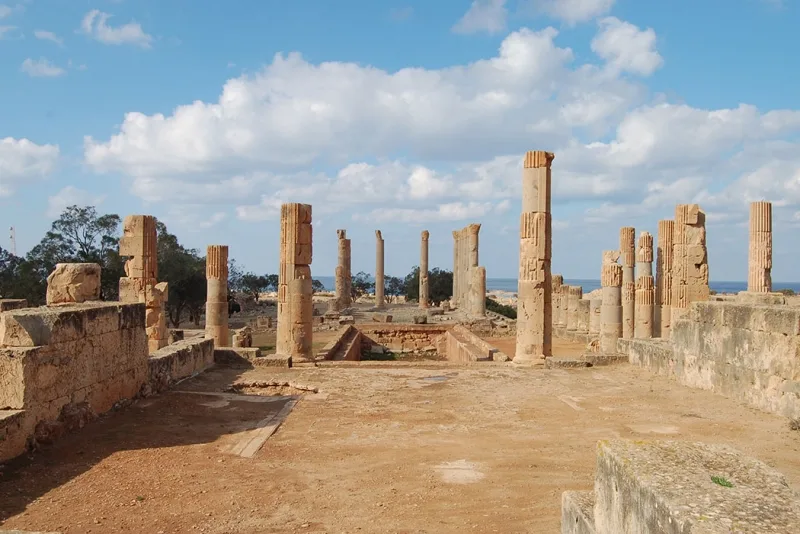
6. Tunisia
Sfax
On August 2, 2027, Tunisia will host a remarkable astronomical event—the total solar eclipse. The maximum totality of the eclipse in the city of Sfax promises a totality duration of about 5 minutes and 41 seconds. This rare spectacle will be visible from Sfax and the central regions of the country, offering both locals and visitors an unforgettable celestial experience. The central location provides an optimal viewing platform, ensuring that observers can enjoy the full majesty of the eclipse in a uniquely Tunisian setting.
Tunis
While the central part of Tunisia basks in the complete shadow of the moon, the capital city of Tunis, specifically the area around Tunis-Carthage, will witness this event as a partial eclipse. With the Sun's altitude at 40° at the onset, approximately 96.5% of the Sun will be obscured. This partial coverage still offers a dramatic view, allowing residents and tourists in Tunis to experience the solar eclipse with significant coverage, adding a mystical ambiance to the historic and vibrant cityscape.
Eclipse Tourism and Future Prospects
Looking ahead, Tunisia will witness two more total solar eclipses in the 21st century, with the next one occurring on September 2, 2081, in the southern regions. This series of eclipses not only highlights Tunisia as a prime location for astronomical events but also boosts its potential as a key destination for astro-tourism in the coming decades.
- Type: Total Solar Eclipse
- Maximum totality duration: 5 minutes, 41 seconds (Sfax)
- Highlighted spots of the eclipse: Sfax, Kasserine, Gafsa, Houmt Souk (Djerba), Kairouan

7. Yemen
Sana'a
Yemen's capital, Sana'a, is set to play a pivotal role during the solar eclipse on August 2, 2027. As one of the major cities directly under the path of totality, Sana'a will offer a unique vantage point for this astronomical event. The eclipse will commence at 05:50 local time, with the total phase beginning at 06:50. For those 2 minutes and 25 seconds of totality, observers in Sana'a will experience 100% obscuration, witnessing daytime transform into darkness as the moon completely covers the sun.
Observational Opportunities in Sana'a
The historical and cultural backdrop of Sana'a, combined with the total solar eclipse, provides a profound opportunity for both residents and visitors. The clear skies typical of early August are expected to offer optimal viewing conditions. This momentous occasion will not only attract astronomers but also cultural enthusiasts eager to experience how an eclipse influences local traditions and practices.
Preparing for the Event
As the date approaches, preparations are underway to accommodate the influx of tourists and scientists expected to converge on the city. Local authorities and tourism operators are enhancing facilities to ensure that all visitors can enjoy the eclipse safely and comfortably.
- Type: Total Solar Eclipse
- Maximum totality duration: 2 minutes, 25 seconds (Sana'a)
- Highlighted spots of the eclipse: Sana'a
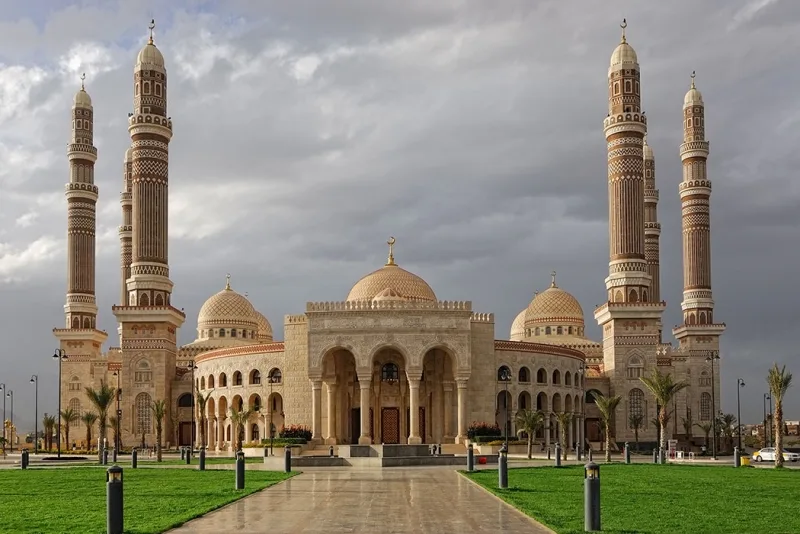
8. Sudan
Jabal Shallal and Ras Abu Shagrab
Sudan will witness solar eclipse totality near Jabal Shallal and near Ras Abu Shagrab on August 2, 2027. The eclipse totality phase will commence at 12:17 CAT.
Khartoum and Surrounding Areas
Khartoum, the capital city of Sudan, along with nearby cities such as Omdurman and Al Ubayyid, will experience the solar eclipse on August 2, 2027, as a partial phenomenon. The eclipse will start at 10:07:50 UTC, casting a shadow that covers up to 95.7% of the sun at its peak. This significant coverage provides a unique opportunity for both locals and visitors to witness the celestial event in a region rich with cultural and historical significance. The partial eclipse in Khartoum offers a dramatic view against the backdrop of the city's confluence of the Blue and White Nile rivers.
Port Sudan
In Port Sudan, the eclipse will also be visible as a partial one on the same date. The eclipse will start at 10:59:22 UTC, with the sun 95.7% covered by the moon at its maximum phase. This coastal city, known for its beautiful Red Sea beaches, will provide a stunning setting for viewing the eclipse. The reflection of the eclipsed sun over the sea could offer a double spectacle – in the sky and on the water – making it a memorable experience for eclipse enthusiasts and nature lovers alike.
Viewing Opportunities and Future Eclipses
Sudan's geographical positioning makes it a noteworthy location for observing not only the solar eclipse of 2027 but also several lunar eclipses. The total lunar eclipse on September 7, 2025, will be clearly visible from Khartoum, providing a deep dive into the dark, transformative sky. Moreover, with a series of penumbral and partial lunar eclipses lined up for the coming years, Sudan is set to be a prime spot for both amateur stargazers and professional astronomers to gather and share in these celestial occurrences.
- Type: Total Solar Eclipse
- Highlighted spots of the eclipse: Jabal Shallal, Ras Abu Shagrab
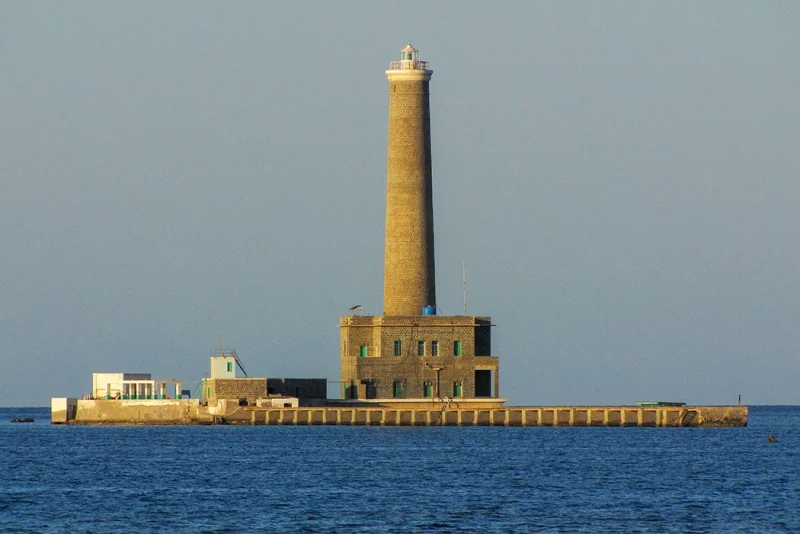
9. Somalia
Bosaso
In the serene city of Bosaso, Somalia, the solar eclipse of August 2, 2027, will present itself as a total eclipse, captivating both locals and visitors alike. The eclipse is set to start at 12:39 local time, reaching its maximum at 14:00, and will conclude at 15:11. During this maximum phase, the sun will be obscured totally by the moon, offering a unique celestial spectacle. Observers in Bosaso will have the opportunity to witness this rare event under the vast, open skies of Somalia. The total eclipse in Bosaso offers a unique viewing experience due to the significant sun coverage and the high position of the sun in the sky. This optimal solar position ensures that the eclipse can be observed without any obstructions, allowing for clear, unimpeded views of the phenomenon.
- Type: Total Solar Eclipse
- Maximum totality duration: 4 minutes, 2 seconds (Bosaso)
- Highlighted spots of the eclipse: Bosaso
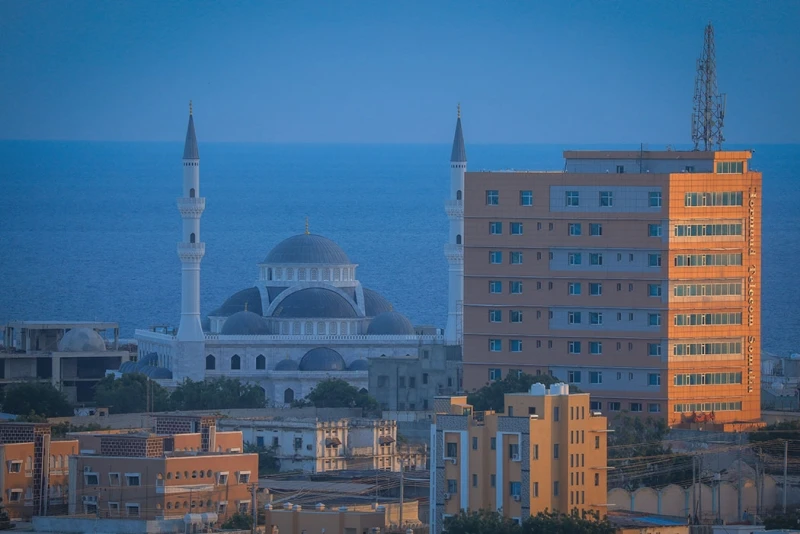
10. Gibraltar
Gibraltar Town
Gibraltar will experience a total solar eclipse, a rare astronomical event that follows the previous total lunar eclipse of March 14, 2025. This spectacle offers a unique viewing opportunity as the next such event, an annular eclipse, will not occur until January 26, 2028. The eclipse will commence at 09:41 local time, transitioning to totality at 10:47, and concluding by 12:01. During the maximum at 10:47:40, the sun will be 38 degrees above the horizon at an azimuth of 96 degrees, with an impressive 100% of the sun's diameter covered by the moon. This phase of totality will last for approximately 4 minutes and 28 seconds, providing a mesmerizing experience for all observers in the region.
Weather Impact on Viewing Conditions
The success of eclipse viewing can be significantly influenced by local weather conditions. In Gibraltar, a very cloudy sky could obstruct the view, diminishing the experience of the eclipse. It is crucial for eclipse chasers to monitor the weather forecasts as the event approaches to ensure the clearest possible skies. The strategic geographic location of Gibraltar, combined with favorable weather conditions, could turn this into one of the most spectacular astronomical events visible from the region.
- Type: Total Solar Eclipse
- Maximum totality duration: 4 minutes, 28 seconds
- Highlighted spots of the eclipse: Gibraltar

11. British Indian Ocean Territory
The skies above the British Indian Ocean Territory are set to host two significant celestial events in the coming years. On August 2, 2027, the British Indian Ocean Territory will become one of the privileged locations to observe the longest total solar eclipse of the century. The eclipse will begin at 16:37 and end at 18:40, with a maximum duration of totality at 3 minutes and 28 seconds. This event is not just a rare astronomical occurrence but a unique opportunity to experience daytime darkness. On September 7, 2025, the islands will witness a total lunar eclipse, a nocturnal spectacle that promises to enchant both residents and visitors alike. This event serves as a precursor to an even more awe-inspiring phenomenon.
Viewing Opportunities and Preparations
Given the significance of the 2027 solar eclipse, preparations are underway to accommodate the expected influx of astronomers and eclipse enthusiasts. The islands offer a range of viewing spots that provide clear, unobstructed vistas of the sky, making it an ideal setting for observing these spectacular moments in celestial mechanics.
- Type: Total Solar Eclipse
- Maximum totality duration: 3 minutes, 28 seconds

12. Algeria
M'sila
In M’sila, the solar eclipse will present itself as a total spectacle, with the sun 100% covered at its peak. The eclipse will begin at 08:48 local time, reaching its maximum at 10:00, and will conclude at 11:18. Observers in M’sila will witness the dramatic coverage eclipse experience, making M’sila a prime location for enthusiasts.
Oran
Oran along with M’sila will also present a significant spot with 100% of the sun obscured at the maximum phase of the eclipse. The event will start at 08:44, reaching its peak at 09:53, and ending at 11:09. Clear skies are crucial for an unobstructed view, as cloudy conditions could diminish the visibility of the eclipse's dramatic features.
Algiers
Algiers, the vibrant capital, will experience the solar eclipse as a significant partial phenomenon. The eclipse will start with the sun at an altitude of 37°, reaching a maximum coverage where the sun's altitude will be 51°, and concluding at 11:22:19 with the sun at an impressive altitude of 65°. This partial eclipse offers a unique opportunity to observe the event against the backdrop of Algiers' rich cultural and historical landscape, adding a layer of mystique to the celestial occurrence.
Constantine
In Constantine, Algeria, the solar eclipse on August 2, 2027, will be an almost total spectacle, with the sun 99.8% covered at its peak. The eclipse will begin at 08:51:43 local time, reaching its maximum at 10:04:14, and will conclude at 11:22:19. Observers in Constantine will witness this celestial event with the sun at a significant altitude of 51° and an azimuth of 108°. The dramatic coverage offers a near-total eclipse experience, making Constantine a prime location for enthusiasts and scholars alike.
Naciria
Naciria will also present a remarkable viewing opportunity with 99.4% of the sun obscured at the maximum phase of the eclipse. The event will start at 08:48:57, reaching its peak at 09:59:59, and ending at 11:16:55. At the maximum, the sun will be at an altitude of 48° and an azimuth of 105°.
- Type: Total Solar Eclipse
- Maximum totality duration: 5 minutes, 23 seconds (M'sila)
- Highlighted spots of the eclipse: M'sila, Oran

Locations of the Partial Solar Eclipse 2027
1. Greece
Looking ahead, Greece will witness several notable eclipses. While the total solar eclipse of 2027 will only be visible as a partial eclipse in Greece, it remains a significant event for both amateur and professional astronomers. It will start at 11:10, and conclude at 13:59. The anticipation builds towards other future eclipses, such as the total lunar eclipse on September 7, 2025, and the annular solar eclipse on June 1, 2030. These events provide excellent opportunities for educational and public engagement activities, continuing Greece’s rich tradition of astronomical observation and public fascination with celestial phenomena.
- Type: Partial Solar Eclipse
- Highlighted spots of the eclipse: Athens,Crete, Patras, Rhodes, Thessaloniki
- Recommended tours: Greece Islands Itinerary, Greece Vacation Package of Athens and Mykonos, and Athens and Santorini Vacation Package

2. Turkey
Turkey, a nation straddling two continents, offers a unique vantage point for various celestial events over the coming years. The sequence of these events not only provides opportunities for observation but also for educational and communal activities that bring together enthusiasts from around the world. The next partial solar eclipse in Turkey is set for August 2, 2027. The event will start at 11:20, and end by 14:13. Looking further ahead, an annular solar eclipse will occur on June 1, 2030. The much-anticipated total solar eclipse will happen on April 30, 2060, providing a rare observational opportunity. The next partial lunar eclipse will grace the Turkish skies on September 18, 2024. This will be followed by a penumbral lunar eclipse on March 14, 2025. A more captivating spectacle, the total lunar eclipse, will occur on September 7, 2025. Another partial lunar eclipse will be visible on August 28, 2026. The penumbral lunar eclipse on February 20, 2027, will be another event for the locals and tourists to enjoy.
- Type: Partial Solar Eclipse
- Highlighted spots of the eclipse: Ankara, Antalya, Bursa, Dalyan, Gelibolu, Istanbul, Izmir
- Recommended tours: Turkey Trip Package, Istanbul and Cappadocia Vacation Package, and Magnificent Tour of Turkey

3. India
The eclipse will commence in India at 15:34:35 local time, concluding by 17:53:41. During this peak moment, observers in Bengaluru will see approximately 39.13% of the Sun covered by the Moon. This partial eclipse offers a unique opportunity for residents and visitors in India to engage with this astronomical phenomenon, adding to the rich tapestry of cultural and scientific activities that such events inspire.
- Type: Partial Solar Eclipse
- Highlighted spots of the eclipse: Ahmedabad, Bengaluru, Hyderabad, Jaipur, Kolkata, Mumbai, New Delhi
- Recommended tours: Delhi, Agra, Jaipur and Ranthambore Tour, Best of North India Tour, and Delhi Agra Jaipur Tour Package

4. Oman
Oman, nestled in the heart of the Middle East, is set to witness a series of celestial events that promise to captivate both locals and visitors. The region of Muḩāfaz̧at ad Dākhilīyah, in particular, offers a unique vantage point for these astronomical occurrences. On August 2, 2027, Oman will experience a partial solar eclipse, where the moon will cover part of the sun’s disk, creating a remarkable visual effect. The eclipse commences at 13:33 and concludes by 16:05.
Here is a glimpse of upcoming events:
Penumbral Lunar Eclipses: Occurrences on September 18, 2024, March 3, 2026, August 28, 2026, February 20, 2027, January 12, 2028, and July 6, 2028. During these events, observers will notice a subtle shading on the moon's surface as it passes through the Earth's penumbral shadow.
Total Lunar Eclipses: The most dramatic of these events will be on September 7, 2025, and December 31, 2028. These eclipses will offer a spectacular view as the moon turns a deep red or rust color when it enters the Earth’s umbral shadow.
Looking ahead, Oman’s prospects for witnessing total solar eclipses are currently projected for beyond the year 2200. However, the annular eclipses, which create a stunning "ring of fire" effect, are also not expected until after 2200. This long interval highlights the rarity and preciousness of such events, making each observable eclipse a significant and memorable event for all who experience it.
- Type: Partial Solar Eclipse
- Highlighted spots of the eclipse: Muscat, Nizwa, Salalah, Seeb
- Recommended tours: Muscat Tour Package, Highlights of Oman Trip, and Oman Short Break

5. UAE
The UAE, while primarily set to witness a partial solar eclipse in 2027, offers a unique blend of modern architecture and vast deserts as backdrops for viewing this celestial event. Commencing at 13:25, and concluding by 15:53, observers in major cities like Dubai and Abu Dhabi will have the chance to experience the eclipse with about 90% of the sun obscured by the moon, providing a dramatic view despite not being in the path of totality.
- Type: Partial Solar Eclipse
- Highlighted spots of the eclipse: Abu Dhabi, Ajman, Dubai, Fujairah, Ras al-Khaimah, Sharjah, Umm al-Quwain
- Recommended tours: Dubai and Abu Dhabi Exceptional Tour Package, Incredible Dubai Family Package, and Dubai Romantic Anniversary Tour

Viewing Tips and Safety
As we eagerly anticipate the solar eclipse 2027, it is paramount to prioritize safety while maximizing our viewing experience. Here are essential tips to ensure that you observe this celestial event without risking harm to your eyes or missing out on any of the spectacle's grandeur.
Use Proper Solar Viewing Equipment
- Eclipse Glasses: Ensure you have ISO 12312-2 certified solar eclipse glasses. These glasses block harmful solar radiation and allow you to look directly at the eclipsed or partially eclipsed sun safely.
- Handheld Solar Viewers: Similar to eclipse glasses, these viewers must meet the international standard for safe solar viewing. They are a convenient alternative, especially for those who wear prescription glasses.
- Special-purpose Solar Filters: These are essential for anyone wishing to view the eclipse through optical devices such as telescopes, binoculars, or cameras. Attach the filter securely to the front of the device to protect your eyes from severe injury that can occur within seconds of unfiltered viewing.
Indirect Viewing Methods
If you do not have access to solar viewers or eclipse glasses, you can still enjoy the eclipse safely through indirect methods:
- Pinhole Projectors: These can be easily made at home with simple materials like paper, cardboard, or even a leaf with a small hole. They project an image of the sun onto a flat surface, allowing you to watch the progress of the eclipse without looking directly at the sun.
- Projection Using Binoculars or Telescopes: Point the telescope or binoculars away from the sun and project the image onto a white screen. This method provides a larger and clearer image of the eclipse phases but must be handled carefully to avoid direct sunlight contact with your eyes.
General Outdoor Safety During the Eclipse
Observing the solar eclipse is an outdoor activity, which means you should be prepared for prolonged exposure to the elements:
- Sun Protection: Apply broad-spectrum sunscreen, wear a wide-brimmed hat, and use UV-blocking sunglasses when not looking directly at the sun through your solar viewers.
- Comfort and Hydration: Bring water, snacks, and portable chairs or blankets. Ensure you are comfortable and hydrated, especially if you are in a location where the eclipse lasts several minutes.
- Local Weather: Check the local weather forecast and prepare for sudden changes to avoid being caught in adverse conditions.
By adhering to these guidelines, you can safely enjoy the mesmerizing sight of the solar eclipse 2027, turning it into a memorable and educational experience without any risk to your well-being.
Traveling for the Eclipse: How to Plan your Eclipse-Chasing Adventure
The allure of witnessing a total solar eclipse firsthand often inspires people to travel great distances, embarking on what can only be described as a pilgrimage to stand in the moon's shadow. Planning your eclipse-chasing adventure for the total Solar Eclipse of 2027 involves a blend of logistical preparation and embracing the unknown, weaving together the practical and the profound. Here are steps to plan your journey, ensuring that your adventure is as breathtaking as the eclipse itself.
Begin by solidifying your destination within the path of totality well in advance. Due to the high demand and limited accommodations in prime viewing locations, early planning can make a significant difference in securing your ideal spot. Researching the area, understanding local transportation options, and booking accommodations early will alleviate much of the stress associated with eclipse travel. Additionally, consider joining organized tours specifically designed for eclipse chasers, as these can offer unique insights and streamline the planning process.
Understanding the local context of your chosen destination will greatly enrich your experience. Familiarizing yourself with the local language, customs, and traditions not only shows respect for the host community but also opens doors to deeper connections and experiences. Participating in local eclipse-related events can provide a sense of camaraderie and shared anticipation, enhancing the overall experience of the eclipse.
Lastly, prepare for the practicalities of travel, especially in remote or highly sought-after locations. Ensuring you have all necessary travel documents, vaccinations, and local currency will smooth your journey. Packing essentials such as water, snacks, and first-aid supplies, especially if you'll be in a remote viewing location, is crucial. Additionally, consider the environmental impact of your adventure, striving to leave no trace and respect the natural and cultural heritage of your eclipse destination.
Solar Eclipse Photography: Capturing the Perfect Shot
For those of us passionate about capturing these awe-inspiring moments, preparing the right equipment is crucial. A DSLR or mirrorless camera with full manual control is essential, paired with a super-telephoto lens of at least 200mm to capture detailed images of the eclipse. A strong solar filter is mandatory to protect the camera’s sensor and your eyes from the intense solar rays. Additionally, a sturdy tripod and a shutter release cable will help avoid any camera shake and ensure sharp images. It is also advisable to carry spare batteries and empty SD cards to not miss any part of the eclipse due to technical issues.
Future Eclipses and Preparations
As we look beyond the solar eclipse of 2027, a series of celestial events awaits us, providing numerous opportunities for observation and study. The next total solar eclipse, scheduled for March 20, 2034, will be visible in Egypt, Saudi Arabia, India, Benin, Nigeria, Cameroon, Chad, Sudan, Kuwait, Iran, Afghanistan, Pakistan, and China. Every eclipse offers a unique perspective and viewing opportunity depending on geographical location and atmospheric conditions.
As we anticipate the solar eclipse of 2027, we stand on the brink of a moment that will unite us in wonder and curiosity. This celestial event, a dance of light and shadow, reminds us of the beauty of the natural world and our place within the cosmos. It's an opportunity to step away from the everyday, to experience the sublime, and to connect with others who share in the awe of this event. From the ancient ruins of Luxor to the vibrant streets of Marrakech, and further to the historic landscapes of Spain and Saudi Arabia, this guide serves as a compendium of the best vantage points to witness the awe-inspiring phenomenon. It underscores the importance of preparation, from choosing the right viewing location to ensuring eye safety, making every moment of the eclipse an unforgettable experience. As we count down the days to the eclipse, let us carry with us the excitement and curiosity that such phenomena evoke, looking forward to the shared experience of darkness and light.
Frequently Asked Questions About the Total Solar Eclipse 2027
1. When will the total solar eclipse occur in 2027?
The total solar eclipse of 2027 will occur on Mon, Aug 2.
2. How many countries can see total solar eclipse 2027?
12 countries. Egypt, Morocco, Spain, Saudi Arabia, Libya, Tunisia, Yemen, Algeria, Sudan, Somalia, Gibraltar, and British Indian Ocean Territory.
3. Which countries can see total solar eclipse 2027?
Egypt, Morocco, Spain, Saudi Arabia, Libya, Tunisia, Yemen, Algeria, Sudan, Somalia, Gibraltar, and British Indian Ocean Territory.
4. Which country the maximum duration of totality of the Solar Eclipse 2027 occur?
Luxor, Egypt.
5. How long will the total solar eclipse 2027 last?
The duration of totality for the 2027 solar eclipse will vary depending on the location along the path of totality. The maximum duration of totality will be observed in Egypt, approximately 37 miles southeast of Luxor. It will last 6 minutes and 22 seconds.
6. What the maximum duration of totality of the Solar Eclipse 2027?
6 minutes and 22 seconds.
7. What is the path of totality for the 2027 solar eclipse?
The path of totality for the solar eclipse on August 2, 2027, will traverse from the Atlantic Ocean, covering parts of Spain, Morocco, Algeria, Tunisia, Libya, Egypt, Sudan, Saudi Arabia, Yemen, and Somalia.
8. What made the 2024 solar eclipse noteworthy?
The 2024 solar eclipse was particularly significant because the duration of totality could last up to twice as long as the 2017 eclipse, depending on where one viewed it. This made it the longest totality observed on land in over a decade, attracting eclipse enthusiasts globally to the path of totality.
Related Articles
Keep the inspiration going with these handpicked travel reads.
